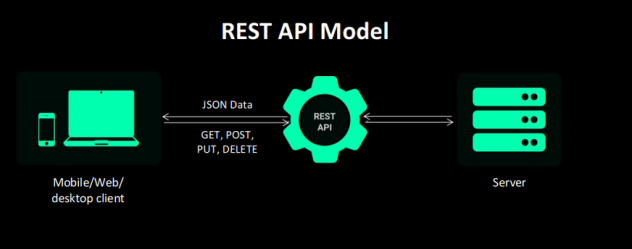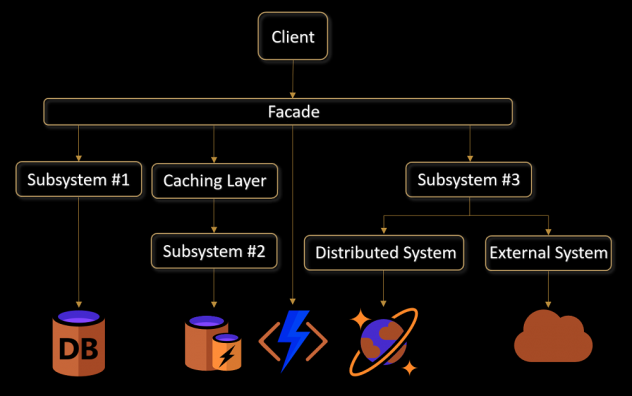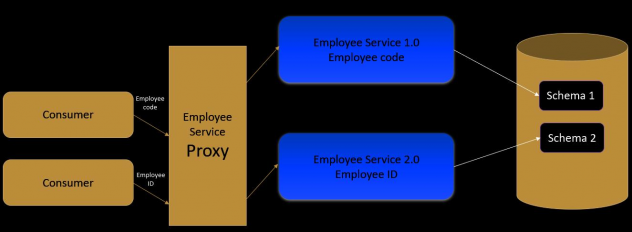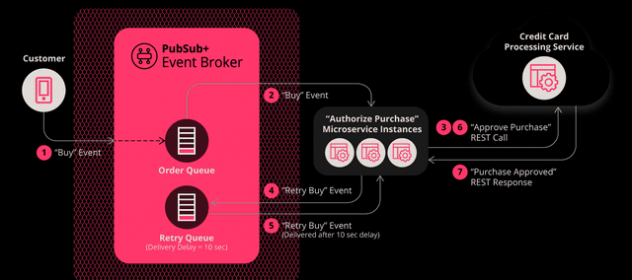Overview
In this new microservice article, we’ll delve into architecting API-based microservices. Before we dive in, it’s important to consider that microservices are not just limited to specific software components or architectures—they are a set of design principles that can be applied across various applications. Whether it’s a web API or a worker-based application, microservices principles can guide our design decisions. We’ll focus on exploring architectural patterns, styles, and functional/nonfunctional requirements that will help us create exceptional microservices APIs. Some application-level architecture concepts like separation of concerns and layering will be involved. Main purpose is to showcase the best practices and patterns that will allow us to develop highly effective microservices APIs, aligning with the core principles of microservices design. So let’s dive in
Functional considerations
As we commented, some functional requirements that come into play when designing APIs for microservices. Microservices have their own set of design principles, and these principles have a significant impact on API design. Let´s highlight the main ones :
- Loosely coupled: Microservices APIs should be independent from other services and external systems, able to interact with any implementation that adheres to the same contracts.
- Independently changeable: APIs should allow for internal changes without disrupting the overall system’s functionality, enabling seamless integration into the microservices architecture.
- Independently deployable: APIs should be deployable as standalone components, separate from other services, allowing for independent updates during the release process.
- Contract support: APIs must support and honor their contracts, meaning they can undergo changes without breaking external inputs and outputs. Backward compatibility with previous versions is also important to avoid disrupting existing clients.
- Technology-agnostic: Microservices APIs should not impose specific technology stacks on client applications or services, promoting flexibility and easy integration with third-party systems.
- Stateless: APIs should not rely on remembering previous interactions or maintaining state. Each request should be handled independently, allowing for scalability and the ability to scale out components.
api architecture flavours & patterns
So, when it comes to designing APIs for microservices, we have various architecture options to consider. The first step is selecting an architectural style, which is like the overall design pattern and communication style of the API within the larger architecture. The recommended choice for microservices APIs is the pragmatic REST style. It’s a refined version of REST that fits well with microservices principles. We’ll focus on practical REST rather than an idealistic version called HATEOAS.
While there are other styles like RPC and SOAP, they don’t meet all the functional requirements we need for implementing microservices design principles. Therefore, we’ll concentrate on using REST to build microservices APIs. Moving on, within the API itself, we’ll explore specific architectural design patterns that help us structure the API effectively and meet microservices’ functional requirements.
In the same line, we’ll look at important patterns such as the facade pattern, the proxy pattern, and the stateless server pattern. These patterns play a key role in designing APIs that align with microservices principles. So, by understanding the architectural style and utilizing these patterns, we’ll be on our way to creating robust and functional microservices APIs.
API REST
REST, which stands for Representational State Transfer, is an architectural style for designing networked applications.
REST follows a set of principles and constraints to provide a simple and scalable approach for building distributed systems. It is based on the concept of resources, which are identified by unique URLs (Uniform Resource Locators). Clients can perform various operations (HTTP methods) on these resources, such as retrieving, creating, updating, or deleting data.
APIs that adhere to these constraints are considered “RESTful”, including microservices APIs. One important constraint is the use of HTTP-based infrastructure, similar to how websites operate. This means RESTful APIs can leverage the advantages of web technologies, such as caching and HTTP compression.
RESTful APIs borrow concepts from web technologies, like using JSON or XML to send and receive data. Instead of calling methods directly, you interact with resource endpoints, which are essentially URLs. For example, you might have an endpoint for retrieving account information by specifying the account number in the query string. This style allows APIs to handle logic through resource endpoints rather than method calls.
Other REST constraints include the client-server model, where the API is decoupled from the client and communicates via standard HTTP codes and responses. APIs must also be stateless, not remembering previous interactions. Caching support is essential to indicate which responses can be cached to improve performance.
RESTful APIs should work within a layered system, which means there can be intermediary systems like load balancers or caching servers. The uniform resource interface principle emphasizes using resources (nouns) instead of methods (verbs), and operations are performed using appropriate HTTP verbs like POST or GET. Requests should contain enough information to carry out the intended manipulation, such as including the record ID for a deletion.
To ensure self-descriptive messages, the API should specify the format (e.g., JSON) in the HTTP headers. This allows for clear communication between clients and APIs.
In summary, REST is an architectural style for designing microservices APIs that follows specific constraints, leveraging the benefits of HTTP infrastructure and standardized communication patterns.
Facade Design Pattern
Now we’ll explore the Facade pattern, which is useful when it comes to building microservices APIs. The Facade pattern helps us separate the business logic from the API logic, making our APIs cleaner and more maintainable. We’ll take a closer look at how it works and how it enables us to achieve single cohesion within our microservices architecture. So, let’s get started and discover the power of the Facade pattern for designing robust and efficient APIs
Main features
These are the main benefits of implementing Facade desing pattern at microservices architecture:
- Microservices Decoupling: The Facade pattern helps to decouple the API layer from the underlying microservices or subsystems, ensuring that each microservice’s internal complexity is hidden behind a simplified interface.
- API Abstraction: The Facade acts as a single entry point or interface for the API consumers, shielding them from the intricacies of individual microservices and providing a unified and consistent API.
- Simplified Communication: The Facade pattern enables the API layer to communicate with multiple microservices through a single point, reducing the complexity of orchestration and handling communication between different microservices.
- Service Composition: The Facade can aggregate and coordinate multiple microservices to fulfill a specific API request, encapsulating the necessary interactions and data transformations within the Facade itself.
- Flexibility and Maintainability: By separating the API logic from the microservices implementation details, the Facade pattern allows for easier maintenance, updates, and versioning of the API without impacting the underlying microservices.
- Security and Access Control: The Facade can incorporate security measures and access controls, serving as a gatekeeper to ensure that only authorized requests are forwarded to the appropriate microservices.
- Load Balancing and Scaling: The Facade can handle load balancing and scaling concerns by distributing API requests across multiple instances of microservices or dynamically scaling the underlying microservices based on demand.
Proxy Design Pattern
Now is time to consider the Proxy design pattern in API architectural design. The Proxy design pattern is incredibly valuable, particularly when it comes to APIs that interact with other APIs. It provides an object that acts as a placeholder or wrapper for another object, often obtained from an external API. The primary purpose of the proxy object is not to contain significant business logic, but rather to encapsulate the complexities involved in connecting to the API.
When working with the proxy object, it feels like working with a local object, as the proxy object handles all the intricacies of connecting to the API internally. The proxy object may also include additional logic to simplify the usage of the wrapped object. Additionally, the proxy object can incorporate transformation logic to modify or cleanse values retrieved from the remote API, aligning them with the local context of your microservice.
In some cases, if the external API or the wrapped object also requires security details, the proxy object can include the necessary security information. Furthermore, if the proxy object needs to send data back to the external API, it can incorporate validation logic to ensure the accuracy and integrity of the values being transmitted.
By employing the Proxy design pattern in API architecture, especially when dealing with interactions between microservices or external APIs, you can simplify the logic within your API. The complexities are hidden within the proxy object, allowing you to focus on the essential business logic within your microservice. The Proxy design pattern proves to be a valuable tool in creating more manageable and efficient APIs.
Main features
- Simplifying Interactions: The Proxy pattern simplifies the interaction between microservices by providing a proxy object that acts as a surrogate or placeholder for the actual service. It encapsulates the complexities of remote service communication, making it easier to work with.
- Loose Coupling: The Proxy pattern also promotes loose coupling between microservices. The proxy object acts as an intermediary, decoupling the client microservice from the remote microservice it communicates with. This allows for better modularity and flexibility in the system.
- Remote Service Access: The Proxy pattern facilitates access to remote microservices or external APIs by providing a local representation or interface. It abstracts away the details of remote communication and provides a simplified API for clients to interact with.
- Security and Access Control: The Proxy object can incorporate security measures and access control logic, ensuring that only authorized requests are forwarded to the remote microservice. It helps enforce security policies and authentication mechanisms at the API level.
- Caching and Performance Optimization: The Proxy pattern can implement caching mechanisms to improve performance and reduce the number of requests made to the remote microservice. The proxy object can cache responses and serve them to clients without the need to reach out to the remote microservice each time.
- Load Balancing and Failover: The Proxy pattern can handle load balancing and failover scenarios by distributing requests across multiple instances of the remote microservice. It provides fault tolerance and resilience to the system by intelligently routing requests based on availability and performance.
- Monitoring and Logging: The Proxy pattern can incorporate monitoring and logging capabilities to gather insights into the interactions between microservices. It helps track request/response information, latency, error rates, and other relevant metrics for analysis and troubleshooting
Stateless Design Pattern
When building microservices, it’s crucial to consider architectural design patterns that enhance scalability, performance, and availability. One such pattern is the Stateless Service Pattern, which emphasizes the absence of state within the service. Unlike stateful services that rely on server-side session facilities, the Stateless Service Pattern advocates for keeping no state information at the microservices API end.
This pattern promotes that data related to a request and its associated state should be maintained at the client’s end. This means that the client application calling the API is responsible for including any necessary data for the request to be processed. By adopting the Stateless Service Pattern, our microservices architecture gains significant advantages.
One of the key benefits is improved scalability, as we can easily scale out our microservices by deploying multiple instances of each service. Each instance can handle incoming requests independently, as they don’t need to remember any state or context related to previous requests. This enhances the overall performance and availability of our services.
However, it’s essential to note that the Stateless Service Pattern comes with a trade-off. The increased data transmission between the client and the server leads to higher network traffic, as the request now carries the necessary information to describe the transaction and its state. Nonetheless, by embracing the stateless approach across all microservices APIs, we unlock significant advantages in terms of scalability, performance, and service availability.
Main features
- Absence of State: The Stateless Service Pattern focuses on not maintaining any state information within the microservices themselves. This means that between requests, no data related to the request is stored in memory at the server or service end. Instead, the state and data required for processing a request are sent as part of the request itself.
- Scalability: By being stateless, microservices can easily scale out horizontally. Multiple instances of the same service can be deployed, and each instance can handle requests independently without relying on shared state. This enables the system to handle a higher volume of requests and provides better scalability as the demand grows.
- Improved Performance: Stateless services offer improved performance due to their ability to distribute the workload across multiple instances. Each instance can process requests in parallel without the need for synchronization or shared state. This results in faster response times and better overall system performance.
- Availability: Since any instance of a stateless service can handle a request without relying on specific state information, the availability of the service is enhanced. If one instance becomes unavailable or experiences a failure, other instances can seamlessly take over the processing of requests, ensuring uninterrupted service availability.
- Simplicity and Modularity: Stateless services simplify the design and implementation of microservices. They promote a modular architecture where services can be developed and deployed independently. The absence of state eliminates the need for complex session management or state synchronization, leading to simpler and more manageable services.
- Stateless Client-Server Interaction: The stateless nature of microservices extends to the client-server interaction as well. The client is responsible for sending all the necessary data and state information with each request, allowing the server to process the request without relying on any client-specific context or session.
That´s all for today, happy building !




